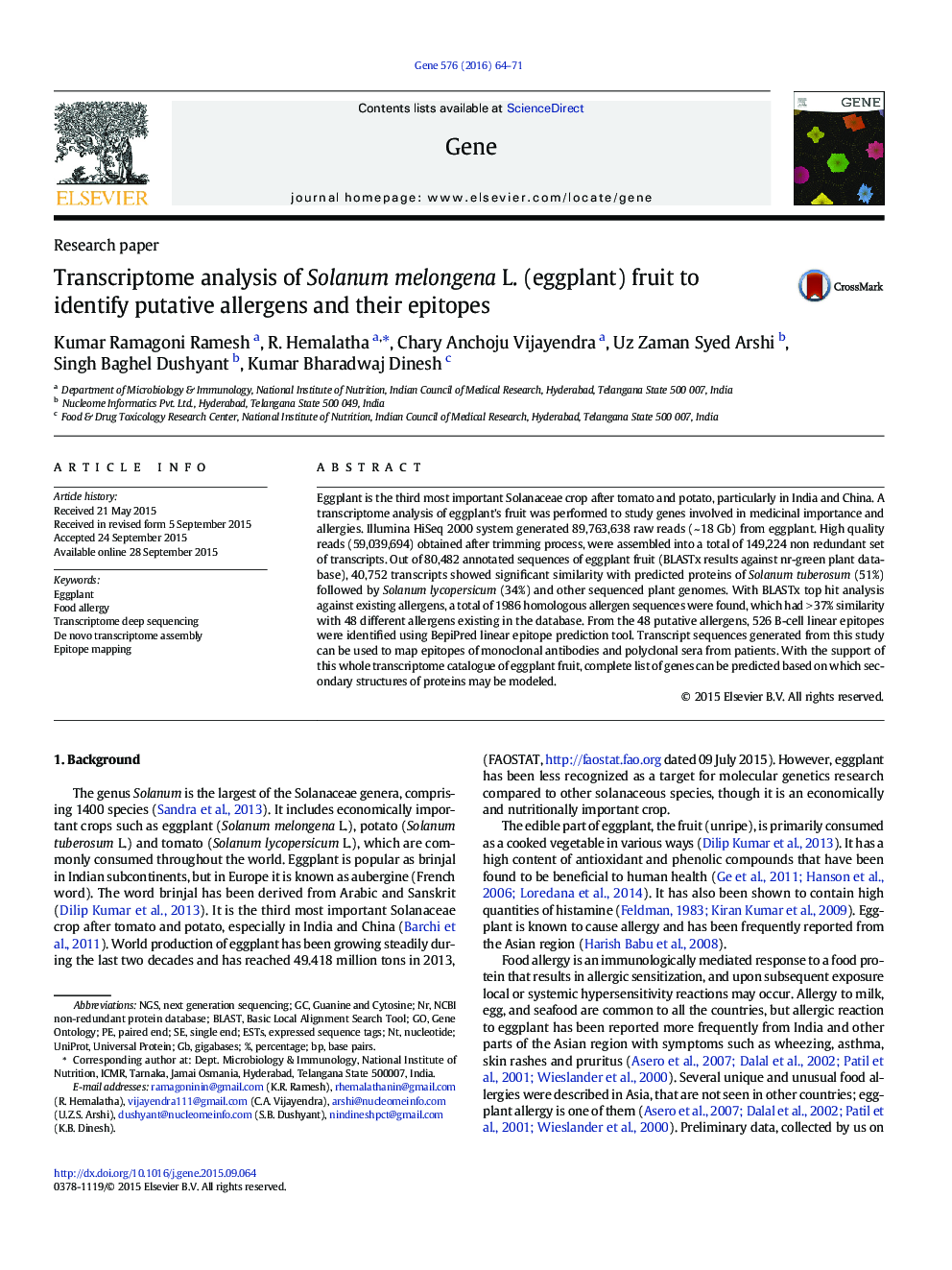| Article ID | Journal | Published Year | Pages | File Type |
|---|---|---|---|---|
| 2815300 | Gene | 2016 | 8 Pages |
•Complete transcriptome catalogue of brinjal fruit was generated using NGS technology.•Brinjal transcripts showed significant similarity with other plant proteins.•Putative allergen sequences of eggplant matched with 48 different types of existing allergens.•B-cell epitopes were identified using BepiPred linear epitope prediction tool.
Eggplant is the third most important Solanaceae crop after tomato and potato, particularly in India and China. A transcriptome analysis of eggplant's fruit was performed to study genes involved in medicinal importance and allergies. Illumina HiSeq 2000 system generated 89,763,638 raw reads (~ 18 Gb) from eggplant. High quality reads (59,039,694) obtained after trimming process, were assembled into a total of 149,224 non redundant set of transcripts. Out of 80,482 annotated sequences of eggplant fruit (BLASTx results against nr-green plant database), 40,752 transcripts showed significant similarity with predicted proteins of Solanum tuberosum (51%) followed by Solanum lycopersicum (34%) and other sequenced plant genomes. With BLASTx top hit analysis against existing allergens, a total of 1986 homologous allergen sequences were found, which had > 37% similarity with 48 different allergens existing in the database. From the 48 putative allergens, 526 B-cell linear epitopes were identified using BepiPred linear epitope prediction tool. Transcript sequences generated from this study can be used to map epitopes of monoclonal antibodies and polyclonal sera from patients. With the support of this whole transcriptome catalogue of eggplant fruit, complete list of genes can be predicted based on which secondary structures of proteins may be modeled.
